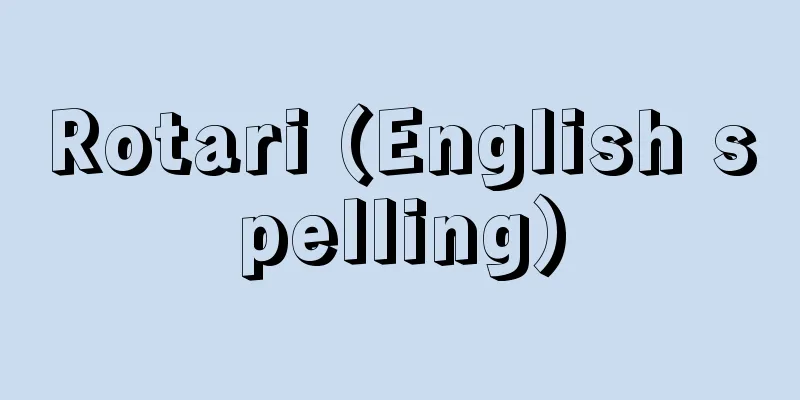United States Education Mission to Japan

|
After World War II, the US government dispatched missions to Japan at the request of the Supreme Commander for the Allied Powers (GHQ) to rebuild education in occupied Japan. The first mission consisted of 27 members and the second mission consisted of five members, who arrived in August 1950. The first mission stayed in Japan for about a month to investigate and study the state of education in Japan, and then submitted a report to the Supreme Commander for the Allied Powers. In the introduction to the report, the mission stated, "Teachers' best abilities can only be fully realized in an atmosphere of freedom. It is the job of administrators to create this atmosphere, not the opposite. The immeasurable qualities of children will only bear fruit in the sunlight of liberalism." Based on the educational ideals of American liberalism, the mission made various proposals for the modernization of education. This report made concrete proposals based on the principles for promoting the democratization of education in postwar Japan, and is composed of a preface, introduction, Chapter 1 "The Objectives and Contents of Education in Japan," Chapter 2 "Reform of the National Language," Chapter 3 "Educational Administration in Primary and Secondary Schools," Chapter 4 "Teaching Methods and Teacher Training," Chapter 5 "Adult Education," Chapter 6 "Higher Education," and a summary of the report. In particular, with regard to the education system, the report recommended the realization of nine years of tuition-free compulsory education and coeducational education in six-year elementary schools and three-year lower secondary schools, tuition-free education, coeducational education, and universal admission to three-year upper secondary schools. It also proposed the revision of moral education and history textbooks, the emphasis on health and physical education and vocational education, the adoption of the Roman alphabet, the decentralization of educational administration, the improvement of the standard of teacher training, the enhancement of adult education, and the expansion of higher education, and had a significant impact on education reform in Japan after World War II. The report of the second education mission reviewed the progress and results of the first recommendation and made supplementary recommendations on remaining issues, but also reflected the shift towards anti-communism in the occupation policy at the time. The report consists of a preface, primary and secondary education administration, teaching methods and teacher training, higher education, social education, national language reform, and other important issues in education (teacher organizations, vocational education, private education, moral and spiritual education). In addition, an American educational mission was sent to Germany in the summer of 1946, which, like Japan, recommended reforms to democratize education, but the impact was not significant. [Manomiya Yu] [Reference items] | |Source: Shogakukan Encyclopedia Nipponica About Encyclopedia Nipponica Information | Legend |
|
第二次世界大戦後、占領下日本の教育再建のため、連合国最高司令部(GHQ)の要請に基づいて、アメリカ政府から派遣された使節団。第一次教育使節団は1946年(昭和21)3月に27名、第二次教育使節団は1950年8月に5名がそれぞれ来日した。第一次教育使節団は、約1か月間滞在して日本の教育事情を調査研究したのち、連合国最高司令官に報告書を提出した。その報告書の序論で、「教師の最善の能力は、自由の空気のなかにおいてのみ十分に現される。この空気をつくりだすことが行政官の仕事なのであって、その反対の空気をつくることではない。子供のもつ測り知れない資質は、自由主義という日光の下においてのみ豊かな実を結ぶものである。」と、アメリカ自由主義の教育理念を中心に据え、教育の近代化についての諸提案を行った。この報告書は、戦後日本における教育の民主化を推進するための諸原則のもとに具体的な提案を行ったもので、前書き、序論、第1章日本の「教育の目的および内容」、第2章「国語の改革」、第3章「初等および中等学校の教育行政」、第4章「教授法と教師養成教育」、第5章「成人教育」、第6章「高等教育」、本報告の要旨、で構成されている。とくに、教育制度については、6年制小学校と3年制下級中等学校における9か年の無月謝制義務教育および男女共学制、3年制上級中等学校における無月謝制、男女共学制、希望者全員入学制の実現などを勧告した。また、修身・歴史教科書の改訂、保健体育や職業教育の重視、ローマ字の採用、教育行政の地方分権化、教師養成の水準向上、成人教育の充実、高等教育の拡大などについても提案し、第二次世界大戦後の日本の教育改革に重要な影響を与えた。 第二次教育使節団報告書では、第一次の勧告事項の進行と成果とを検討し、残された課題について補足的な勧告を行ったが、当時の占領政策における反共主義化への転換も反映していた。その内容は、前書き、初等中等教育行政、教授法と教師養成教育、高等教育、社会教育、国語の改革、その他教育上の重要な諸問題(教員団体、職業教育、私学教育、道徳的精神的教育)から構成されている。 なお、ドイツにも1946年夏にアメリカ教育使節団が派遣され、日本と同様に教育の民主化のための改革を勧告したが、その影響はあまりみられなかった。 [真野宮雄] [参照項目] | |出典 小学館 日本大百科全書(ニッポニカ)日本大百科全書(ニッポニカ)について 情報 | 凡例 |
Recommend
Post-operative bleeding
When an area that has already bled due to an injur...
Explanation of the Ming Law and National Characters
A Japanese-language commentary on the basic legal ...
History Department - Fuhitobe
A type of ancient bee. A group of tomo who worked...
Yatogami - Yatogami
A snake god that appears in the section on Namekat...
Vaccinium angustifolium (English spelling) Vacciniumangustifolium
… [Matsui Jin]. … *Some of the terminology that m...
apella
…The word agora comes from the verb meaning to ga...
Pheromone - pheromone (English spelling)
A general term for substances released by an indi...
Kawanishi Senzuka
⇒ Niizawa Senzuka Kofun Group Source: Kodansha Nat...
Abbott, B.
…However, shortly after his death, W. Benjamin, i...
《Bluebeard Raul》
...However, research is also being conducted to f...
Piranesi - Giovanni Battista Piranesi
Italian printmaker, architect, and archaeologist....
Philippe, Gérard
Born: December 4, 1922 in Cannes [Died] November 2...
Inula belenium (English spelling) Inulabelenium
...Name of herbal medicine. Botanically, the root...
Takao
A prostitute from the early to mid-Edo period. Als...
Harvard University - Harvard University
It is the first university in the United States, ...








![Krishna [river] - Krishna](/upload/images/67cb6f3091bfe.webp)
